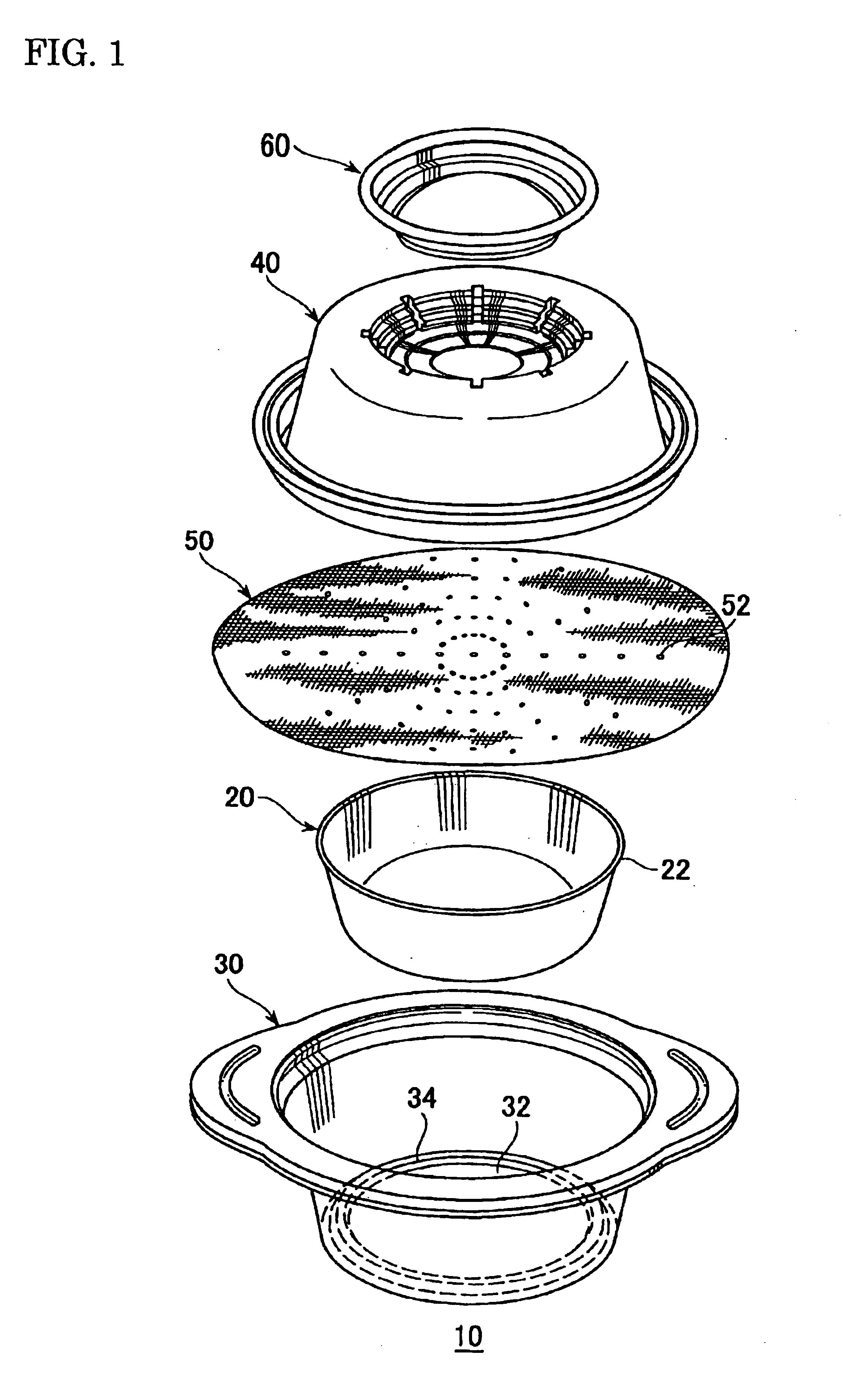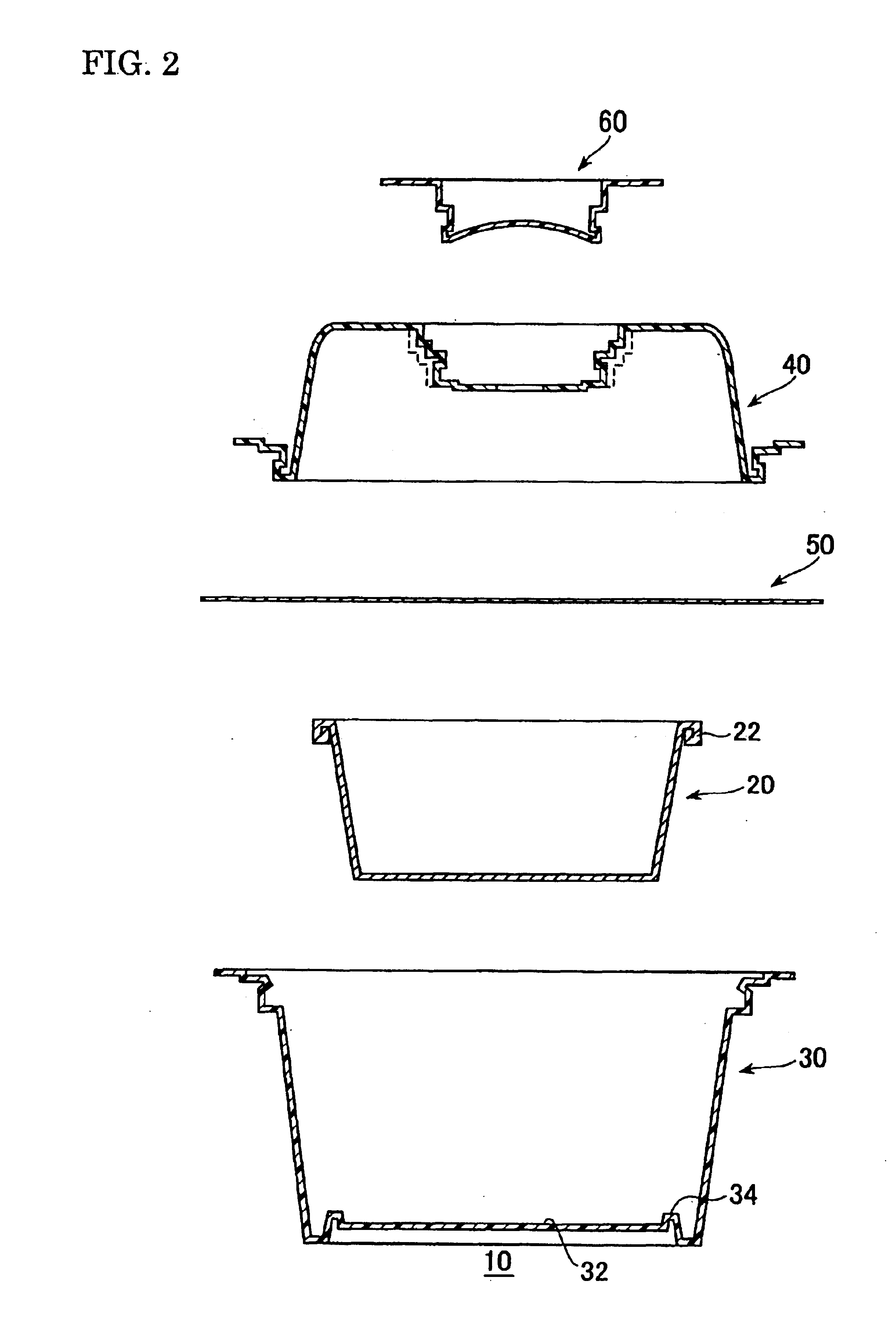Rice cooking system for microwave oven
a microwave oven and rice technology, applied in the direction of electric/magnetic/electromagnetic heating, lighting and heating apparatus, heating types, etc., can solve the problems of rice bran and unfavorable cooking
- Summary
- Abstract
- Description
- Claims
- Application Information
AI Technical Summary
Benefits of technology
Problems solved by technology
Method used
Image
Examples
first embodiment
[0024]A rice cooking system in accordance with the invention will be explained with reference to FIGS. 1 and 2, in which an inner container 20 is positioned inside an outer container 30 closed by a lid 40. A foam control sheet 50, having a plurality of small holes 52, fits between, and is supported by, the outer container and the lid. The foam control sheet is space from, but overlies, the upper edge of the inner container. A cap 60 fits into a recess in the lid 40, and during cooking, steam is released between the lid and the cap.
[0025]The inner container 20 holds rice and cooking water. The inner container is disposed within the outer container, the side walls of the respective inner and outer containers being spaced from each other. A step section 34, provided on a bottom 32 of the outer container 30, maintains the inner container 20 in coaxial relationship with the outer container.
[0026]The inner container 20 is made of metal, preferably aluminum or stainless steel, and its rim ...
second embodiment
[0043]In the second embodiment, even when foam with high adhesion is formed rapidly, and high pressure is momentarily applied to the foam control sheet 51 which will frequently occur as cooking of rice begins, the pressure may be released through the hole 54, and therefore, it is not necessary to provide a strong fit between the outer container 30 and the lid 40.
[0044]Referring to FIG. 12, the size of the central hole 54 having radial cuts is determined on the basis of the height h1 and diameter W2 of the outer container 30, the height h2 and diameter W2 of the inner container 20, the height difference h3 between height h1 of the container main body 30 and height h2 of the cooking container 20. It is preferable that lengths of the cuts at the edge of the hole 54 be 30-40% of the diameter of the hole 54, and that the diameter of the hole 54 be about 15% of the diameter of the outer container 30. Moreover, it is preferable that the total area of the small holes 52 and the hole 54 with...
PUM
 Login to View More
Login to View More Abstract
Description
Claims
Application Information
 Login to View More
Login to View More - R&D
- Intellectual Property
- Life Sciences
- Materials
- Tech Scout
- Unparalleled Data Quality
- Higher Quality Content
- 60% Fewer Hallucinations
Browse by: Latest US Patents, China's latest patents, Technical Efficacy Thesaurus, Application Domain, Technology Topic, Popular Technical Reports.
© 2025 PatSnap. All rights reserved.Legal|Privacy policy|Modern Slavery Act Transparency Statement|Sitemap|About US| Contact US: help@patsnap.com



